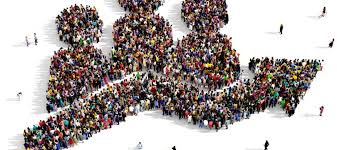Understanding Population Growth in India: Causes, Impact, and the Way Forward
Introduction:
India is home to over 1.4 billion people, making it the second most populous country in the world. In recent years, population growth in India has become a subject of significant discussion, as it plays a vital role in the nation’s economic, social, and environmental dynamics. While population growth brings certain advantages, such as a large workforce, it also poses infrastructure, healthcare, and resource management challenges. This blog delves into the causes of India’s rapid population growth, its impact on society, and potential solutions for sustainable development.
Body:
Causes of Population Growth:
India’s population growth can be attributed to several key factors:
- High Birth Rate: For decades, India has had one of the highest birth rates globally. Cultural factors, lack of awareness about family planning, and limited access to contraception in rural areas contribute to larger family sizes.
- Declining Mortality Rate: Advances in healthcare, improved sanitation, and better nutrition have resulted in lower mortality rates. This has led to an increase in the overall population, as more individuals live longer and healthier lives.
- Young Population: A significant proportion of India’s population is in the reproductive age group (15-49 years). This demographic trend naturally fuels higher birth rates.
- Migration: Internal migration from rural to urban areas also adds to population growth in cities, leading to overcrowding in urban spaces and putting pressure on urban infrastructure.
Impact of Population Growth:
The rapid population growth in India has far-reaching implications across various sectors:
Economic Impact: While a large population offers a substantial workforce, it also presents challenges in terms of employment. The growing population can lead to higher unemployment rates if job creation does not keep pace.
Environmental Degradation: Increased population leads to over-exploitation of natural resources such as water, land, and forests. Deforestation, water scarcity, and pollution are growing concerns as more people require these resources.
Infrastructure and Urbanization: The rising population has strained infrastructure in urban areas. Overcrowded cities face challenges like inadequate housing, traffic congestion, and insufficient public services such as education, healthcare, and waste management.
Healthcare and Education: Providing healthcare and education to a vast and growing population is a daunting task. The quality of healthcare services and education often declines due to the increased demand, especially in rural areas.
Government Initiatives and Family Planning:
Over the years, the Indian government has implemented various programs aimed at controlling population growth. Family planning initiatives, awareness campaigns, and incentives for smaller families have been promoted. Efforts have also been made to improve healthcare facilities and education, particularly in rural regions, to tackle some of the challenges caused by population growth.
Conclusion:
India’s population growth presents a complex challenge that requires a multifaceted approach. While the country benefits from having a large and youthful workforce, unchecked population growth can strain resources, infrastructure, and services. Sustainable development, effective family planning, and widespread education are essential to managing this growth. By implementing policies that address both the opportunities and challenges of population growth, India can work towards a future where the needs of its people are met without compromising the environment or the economy.




